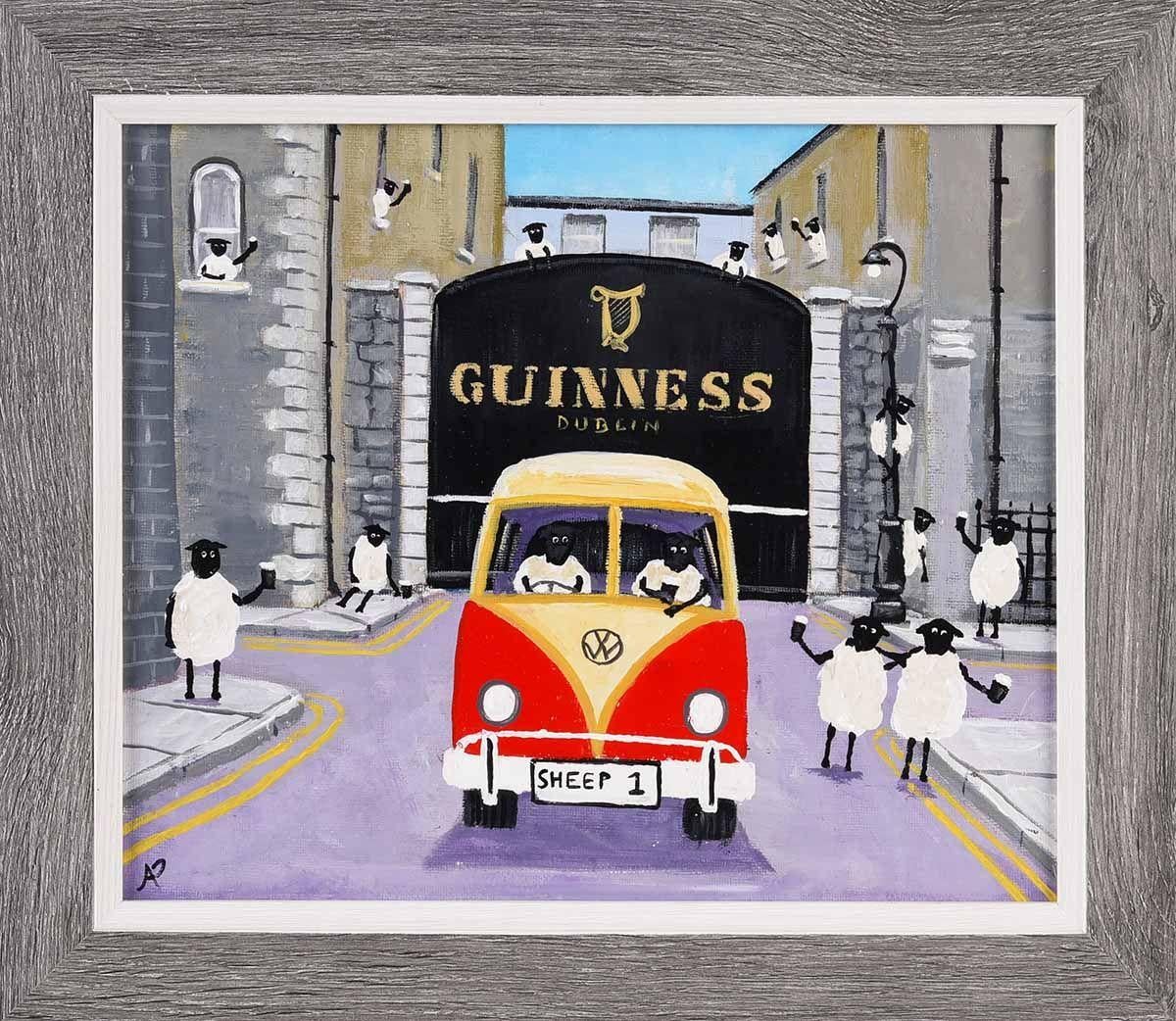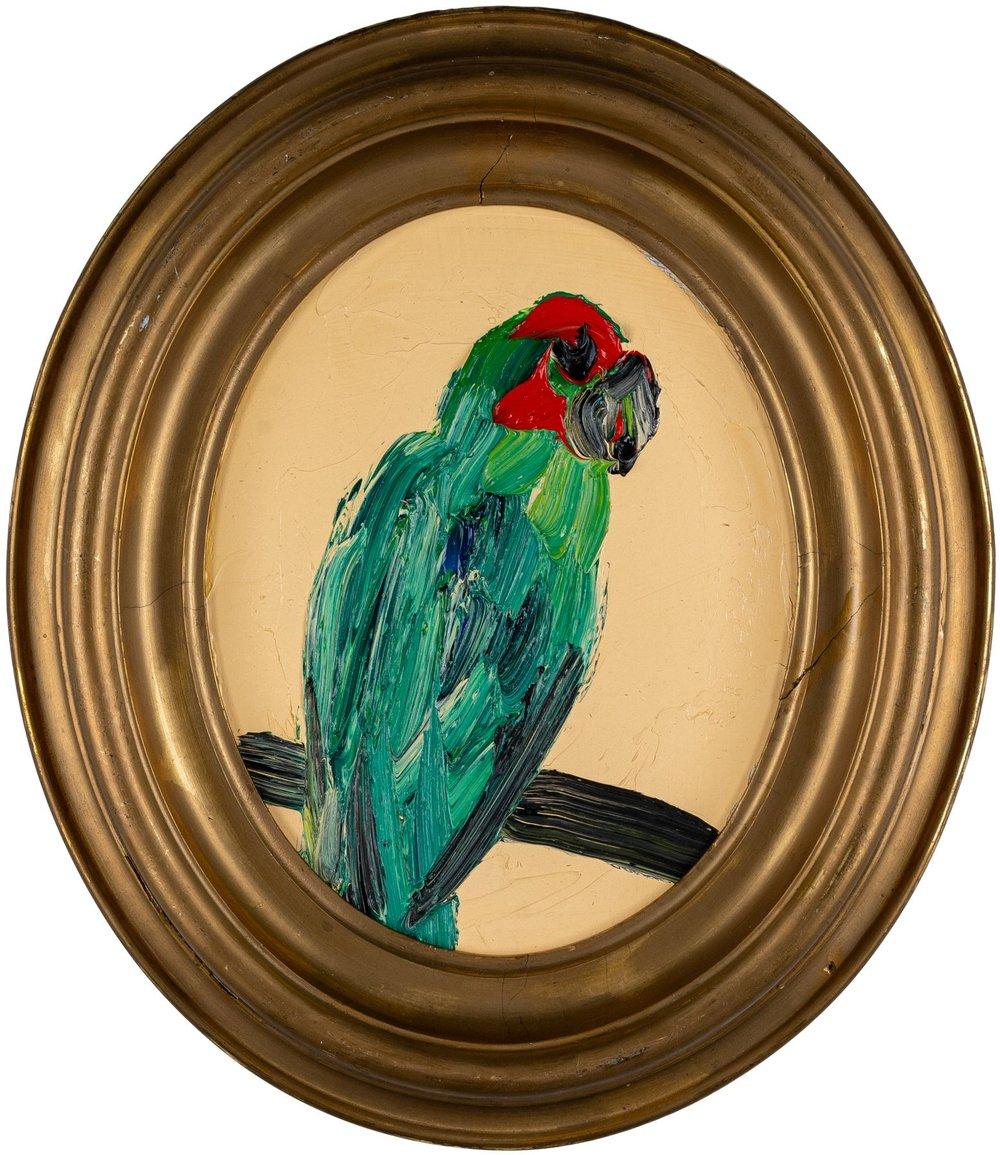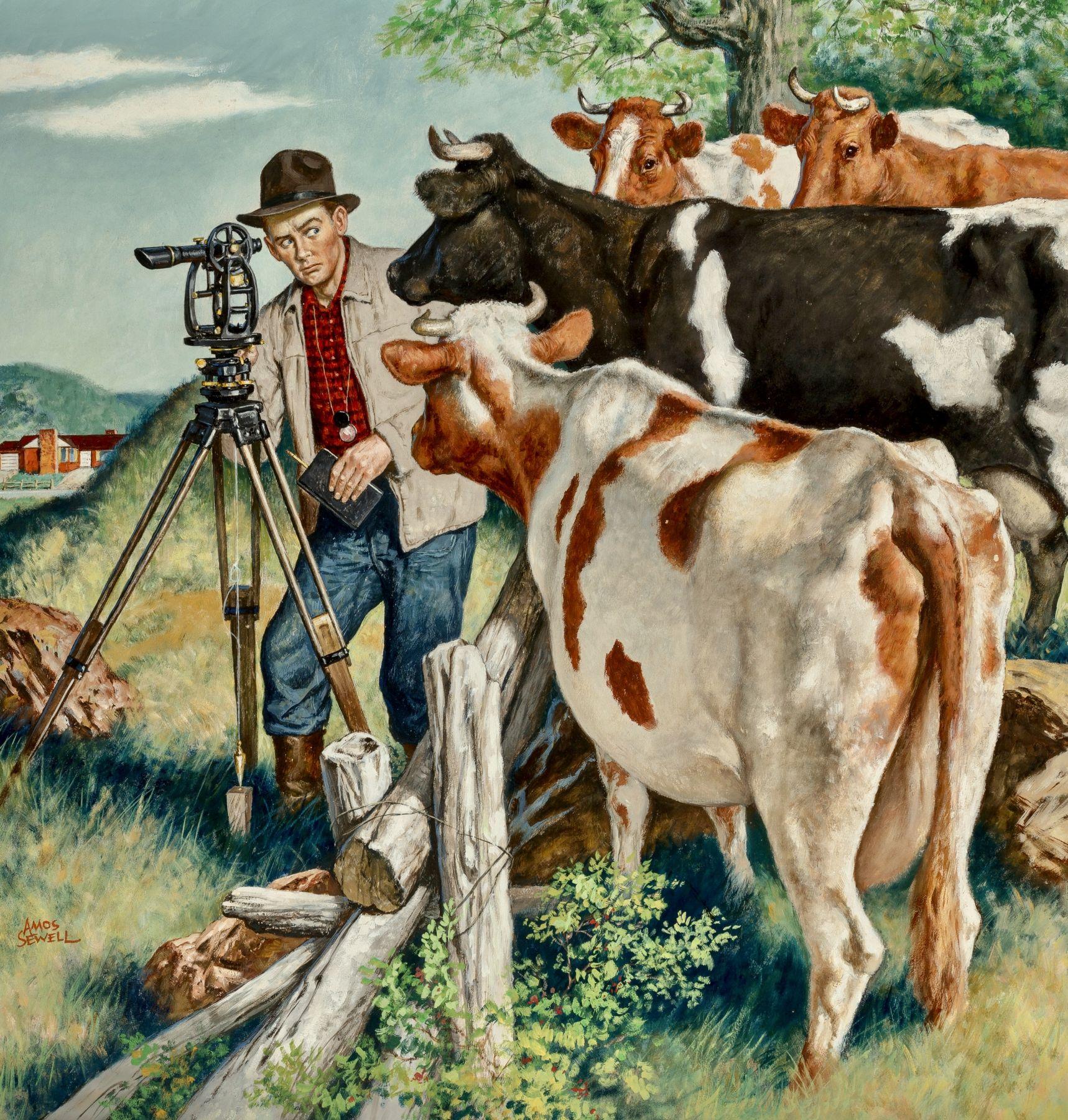Harry Leith-Ross"The Horse Show"c. 1958
c. 1958
About the Item
- Creator:Harry Leith-Ross (1886-1973, American)
- Creation Year:c. 1958
- Dimensions:Height: 8 in (20.32 cm)Width: 10 in (25.4 cm)
- Medium:
- Period:
- Condition:
- Gallery Location:Lambertville, NJ
- Reference Number:
Harry Leith-Ross
Son of an English father and a Dutch mother, Harry Leith-Ross was born in the British Colony of Mauritius, an island in the Indian Ocean thousand miles off the southeast coast of Africa. His first formal art instruction began in England under Stanhope Forbes, followed by studies with Jean-Paul Laurens at the Académie Julian in Paris. Leith-Ross came to the United States to enroll at the National Academy of Design in New York City in 1910, and then to Woodstock, in 1913. It was in Woodstock at the Art Students League, under the tutelage of L. Birge Harrison and John F. Carlson, that Leith-Ross would receive the training that most influenced his career as an artist. There, he formed a lifelong friendship with fellow artist, John Folinsbee. The two artists shared a studio during this time and participated in several joint exhibitions exclusively featuring their work, including an exhibit at the Louis Katz Art Gallery in New York City in 1915. During the First World War, Leith-Ross served in the U.S. infantry, and upon his release, spent a summer painting in England. While there, he participated in a solo exhibition at The Little Gallery in Worthing in 1919. It was said of Leith-Ross by an art critic in a local English newspaper: “An exquisite sense of color, perfect draftsmanship, a thorough grasp of composition and a deep insight into nature, make Harry Leith-Ross not only a brilliant painter but a poet”. Upon returning to the United States, Leith-Ross resided once again in Woodstock where he taught painting. Leith-Ross would often visit his close friend, John Folinsbee, who moved to New Hope in 1916 following his marriage to Ruth Baldwin Folinsbee. Leith-Ross was the best man at his wedding. Some years later, Leith-Ross met Emily, and the couple married in 1925. They remained in Woodstock until purchasing a home in the Jericho Valley on the outskirts of New Hope in 1936, where Leith-Ross remained until the end of his life. He painted a wide array of subjects. His earlier works (1912–30) are very finely painted impressionist landscapes consisting of small, tight brush strokes and a colorful refreshing palette. The early paintings usually depict Woodstock, New Hope and Gloucester. His later works often include figures and his application of paint is lighter. His skillful handling of shadows and light give the later works (1935–60) a striking resemblance to those of Edward Hopper. Many of these paintings depict the landscape surrounding his home in Jericho Valley and the views of New England. Leith-Ross was also a gifted watercolorist. He made occasional trips to Europe and often summered in Rockport and Gloucester, where he held painting classes as well. He exhibited widely and won more than 40 awards. He participated in exhibitions at the National Academy of Design, the Salmagundi Club, the Pennsylvania Academy of the Fine Arts, the Society of Independent Artists, the Corcoran Gallery Biennials, the Carnegie Institute, the Art Institute of Chicago, the American Watercolor Society and the Metropolitan Museum of Art.
- ShippingRetrieving quote...Ships From: Lambertville, NJ
- Return PolicyThis item cannot be returned.
- "Blue Fish"By Vaclav VytlacilLocated in Lambertville, NJJim’s of Lambertville is proud to offer this artwork by: Vaclav Vytlacil (1892-1984) He was born to Czechoslovakian parents in 1892 in New York City. Living in Chicago as a youth, he took classes at the School of the Art Institute of Chicago, returning to New York when he was 20. From 1913 to 1916, he enjoyed a scholarship from the Art Students League, and worked with John C. Johansen (a portraitist whose expressive style resembled that of John Singer Sargent), and Anders Zorn. He accepted a teaching position at the Minneapolis School of Art in 1916, remaining there until 1921. This enabled him to travel to Europe to study Cézanne’s paintings and works of the Old Masters. He traveled to Paris, Prague, Dresden, Berlin, and Munich seeking the works of Titian, Cranach, Rembrandt, Veronese, and Holbein, which gave him new perspective. Vytlacil studied at the Royal Academy of Art in Munich, settling there in 1921. Fellow students were Ernest Thurn and Worth Ryder, who introduced him to famous abstractionist Hans Hofmann. He worked with Hofmann from about 1922 to 1926, as a student and teaching assistant. During the summer of 1928, after returning to the United States, Vytlacil gave lectures at the University of California, Berkeley, on modern European art. Soon thereafter, he became a member of the Art Students League faculty. After one year, he returned to Europe and successfully persuaded Hofmann to teach at the League as well. He spent about six years in Europe, studying the works of Matisse, Picasso, and Dufy. In 1935, he returned to New York and became a co-founder of the American Abstract Artists group in 1936. He later had teaching posts at Queens College in New York; the College of Arts and Crafts in Oakland, California; Black Mountain College in North Carolina; and the Art Students League. His paintings exhibit a clear inclination toward modernism. His still lives and interiors from the 1920s indicate an understanding of the art of Cézanne. In the 1930s, his works displayed two very different kinds of art at the same time. His cityscapes and landscapes combine Cubist-inspired spatial concerns with an expressionistic approach to line and color. Vytlacil also used old wood, metal, cork, and string in constructions, influenced by his friend and former student, Rupert Turnbull. He eventually ceased creating constructions as he considered them too limiting. The spatial challenges of painting were still his preference. During the 1940s and 1950s, his works indicated a sense of spontaneity not felt in his earlier work. He married Elizabeth Foster in Florence, Italy, in 1927 and they lived and worked in Positano, Italy for extended periods of time. Later on, they divided their time between homes in Sparkill, New York and Chilmark, Massachusetts, where Vyt, as he was affectionately called, taught at the Martha's Vineyard Art...Category
1960s Abstract Expressionist Abstract Paintings
MaterialsOil, Board
- "Jo-Jo"By Gershon BenjaminLocated in Lambertville, NJJim’s of Lambertville is proud to offer this artwork by: Gershon Benjamin (1899 - 1985) An American Modernist of portraits, landscapes, still lives, and the urban scene, Gershon ...Category
1940s Modern Animal Paintings
MaterialsCanvas, Oil
- "Bellosguardo (Florence, Italy)"By Daniel GarberLocated in Lambertville, NJJim’s of Lambertville Fine Art Gallery is proud to present this piece by Daniel Garber (1880 - 1958). One of the two most important and, so far, the most valuable of the New Hope Sc...Category
Early 1900s American Impressionist Landscape Paintings
MaterialsOil, Board
- "Lower Manhattan"By Vaclav VytlacilLocated in Lambertville, NJSigned & dated 1940 lower left. Vaclav Vytlacil (1892-1984) He was born to Czechoslovakian parents in 1892 in New York City. Living in Chicago as a youth, he took classes at the S...Category
1940s Abstract Abstract Paintings
MaterialsOil, Board
- "Woman Dressing"By Frederick Carl FriesekeLocated in Lambertville, NJJim’s of Lambertville Fine Art Gallery is proud to offer this work by Frederick Carl Frieseke (1874 – 1939). Frederick Carl Frieseke was a member of the third generation of American painters to inhabit and find inspiration from Giverny, France. His use of bright colors and light, to depict the female figure, defined the style of the Giverny group during his residence, synthesizing aspects of Impressionism and Post-Impressionism. Born in the United States, Frieseke studied at the School of the Art Institute of Chicago and the Art Students League in New York. In 1898, he moved to Paris to enroll in the Académie Julian, where he studied under Benjamin Constant and Jean-Paul Laurens. During this time, Frieseke also briefly studied with James A. Whistler, who would prove to be a great inspiration in Frieseke’s early works. From Whistler, Frieseke adopted a tonalist palette and a decorative approach to figurative painting. While in Paris, Frieseke’s works were featured at the American Art Association of Paris and in several annual salon exhibitions. His painting, “Before the Mirror...Category
1920s American Impressionist Figurative Paintings
MaterialsBoard, Oil
- "Sea and Sky, Deer Isle"By Mercedes MatterLocated in Lambertville, NJJim’s of Lambertville is proud to offer this artwork by: Best known as a painter of abstract still life and founder of the New York Studio School, Mercedes Matter was also a disting...Category
Mid-20th Century Abstract Abstract Paintings
MaterialsCanvas, Oil, Board
- Frederick Rondel (American 1826-1892) A Large, Rare Painting of "Four Horses"By Frederick RondelLocated in New York, NYFrederick Rondel (American 1826-1892) A Large, Rare Painting of "Four Horses", 1866 A magnificent and rare oval painting of horses, oil on board, measuring 52" in diameter, with exceptional quality to detail of the horses and landscape. It is indeed very rare for an American artist to paint horses in this quality and size, thus making this painting an extremely important...Category
19th Century Animal Paintings
MaterialsBoard, Oil
- Sheep in a VW Split Screen Camper Van at the Guinness factory in IrelandLocated in Preston, GBSheep in a VW Split Screen Camper Van at the Guinness factory in Ireland by Contemporary Artist Art measures 12 x 10 inches Frame measures 15 x 13 inch...Category
2010s Contemporary Animal Paintings
MaterialsOil, Board
- Hunt Slonem, "Pink Pair", 10x8 Light Pink Oval Textured Bunny Painting on BoardBy Hunt SlonemLocated in Saratoga Springs, NYRenowned artist Hunt Slonem's "Pink Pair" is a 10x8 oil painting on wood board of two contemporary abstract bunnies in black against a light pink background. A thick application of p...Category
2010s Neo-Expressionist Abstract Paintings
MaterialsOil, Board
- Hunt Slonem, "Lory", 10x8 Green Parrot Oval Avian Painting on BoardBy Hunt SlonemLocated in Saratoga Springs, NYRenowned artist Hunt Slonem's "Lory" is a 10x8 colorful oil painting on wood board of an abstract parrot in green and red against a peach-colored background. A thick application of paint combined with Slonem's antique framing lends a hand in giving this piece motion. Finished with his choice of antique framing. *Painting is framed - Please note that not all Hunt Slonem frames are in mint condition. There may be signs of wear and tear due to the age and history* Inspired by nature and his 60 pet birds, Hunt Slonem is renowned for his distinct neo-expressionist style. He is best known for his series of bunnies, butterflies and tropical birds, as well as his large-scale sculptures and restorations of forgotten historic homes. Slonem’s works can be found in the permanent collections of 250 museums around the world, including the Solomon R. Guggenheim Museum, the Metropolitan Museum of Art in New York City, the Whitney, the Miro Foundation and the New Orleans Museum of Art. About the artist: His flair and admiration for far-flung destinations has been a staple of his life since childhood. Slonem was born in 1951 in Kittery, Maine, and his father’s position as a Navy officer meant the family moved often during Hunt’s formative years, including extended stays in Hawaii, California and Connecticut. He would continue to seek out travel opportunities throughout his young-adult years, studying abroad in Nicaragua and Mexico; these eye-opening experiences imbued him with an appreciation for tropical landscapes that would influence his unique style. After graduating with a degree in painting and art history from Tulane University in New Orleans, Slonem spent several years in the early 1970s living in Manhattan. It wasn’t until Janet Fish offered him her studio for the summer of 1975 that Slonem was able to fully immerse himself in his work. His pieces began getting exhibited around New York, propelling his reputation and thrusting him into the city’s explosive contemporary arts scene. He received several prestigious grants, including from Montreal’s Elizabeth Greenshields Foundation, the National Endowment for the Arts, and the Cultural Counsel Foundation’s Artist Project, for which he painted an 80-foot mural of the World Trade Center in the late 1970s. As Slonem honed his aesthetic, his work began appearing in unique, contextual spaces. By 1995 he finished a massive six-by-86-foot mural of birds, which shoots across the walls of the Bryant Park Grill Restaurant in New York City. His charity work has resulted dozens of partnerships, including a wallpaper of his famous bunnies designed specifically with Lee Jofa for the Ronald McDonald...Category
2010s Neo-Expressionist Abstract Paintings
MaterialsOil, Board
- The Audience, Saturday Evening Post CoverBy Amos SewellLocated in Fort Washington, PAMedium: Oil on Board Signature: Signed Lower Left Original cover illustration for The Saturday Evening Post, July 28, 1956. The Post described, “The cows don't realize it is rude t...Category
1950s Animal Paintings
MaterialsBoard, Oil
- Daytime Watering Hole at Well in French Village 19th Century Oil PaintingLocated in Stockholm, SEThis beautiful painting depicts a crowded scene of a watering hole at a well in the midst of a sunny, hot day, located on the street of a provincial village supposedly located somewh...Category
Late 19th Century Realist Figurative Paintings
MaterialsOil, Cardboard






